Jul 16, 2015 | Posted in How To & Decorating Tips, Inspirations |


Your bedroom is a haven from the rest of the world – a place you feel safe and comfortable. It’s also your most intimate environment, so it should be filled with happy memories and show what makes you, you. If you enjoy traveling, or are inspired by different cultures around the world, you can make your bedroom into a reminder of those travels without leaving the comforts of home. Here are a few international bedroom design ideas that express the personalities and travelogues of their owners.
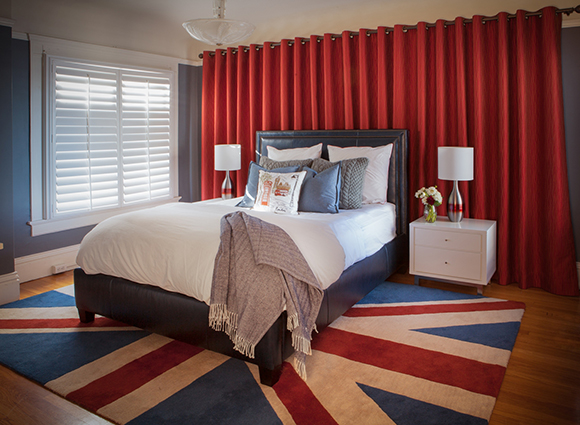
Kimball Starr Interior Design / photo by Marija Vidal
The patriotic British flag rug brands this bedroom with masculine colors: bold red, blue, and white. The London Red fabric draperies soften the space while defining the feature wall and the metal studded blue leather bed frame is masculine yet sensual. Notice how the bed looks inviting? Make your bed linens soft and appealing so you won’t want to leave your bed!
Heavy woven wool shams play to the country’s crisp cool air reminding you of foggy days, thick sweaters, and snuggling by a roaring fire. Pairing those with crisp white linens, wool herringbone throw blanket, and French Blue pinstriped pillows are reminiscent of a proper British tailored suit. Finish off the bed with an accent pillow embroidered with a quintessential double-decker bus, and a bench could also be added at the foot of the bed, covered in fabric that mimics place name signage such as Haversham Corner or Tottenham Court for a genuine British feel.
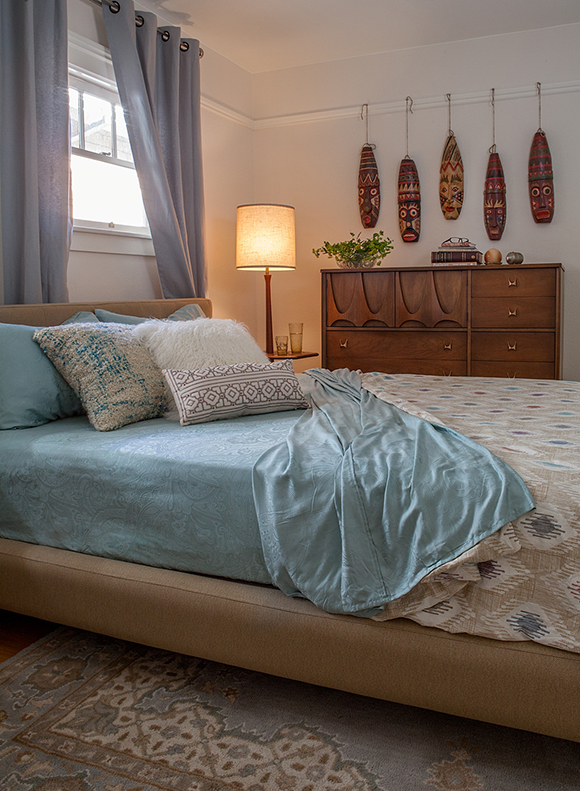
Kimball Starr Interior Design / photo by Mirija Vidal
The softer blues, creams and whites of this vintage bungalow bedroom can be either feminine or masculine to celebrate a global style with a relaxed feel. These soft watery blues and creams complement the vintage Broyhill Brasilia dresser, the bedside lamp and the authentic Brazilian carved masks. Various textures of pillows and ethnic patterned bedspread create a warm landing for your eyes and body.
An antique patterned rug makes a comfortable way to get up in the morning, protecting your feet from cold floors. Brazil is the home of Carnival, so an authentic addition might be a feather arrangement reminiscent of the fabulous headdresses worn at Carnival, or add your own fun masks or carved art you find on your very next global beach travels!
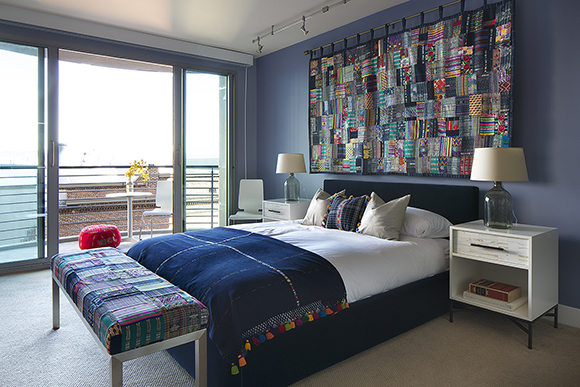
Kimball Starr Interior Design / photo by Eric Rorer
Artisan textiles are the focal point of this contemporary bedroom, which are based on the Guatemalan tapestry brought back from the owner’s travels. We hung it right over the headboard as a statement piece, and then upholstered the bench in a similar hand-sewn fabric. The throw blanket was also an Antigua find in the Guatemalan markets, and we had colorful tassels added as a playful fringe. The bedding is finished off with a decorative pillow to visually tie together all the handmade textiles.
Upholstering the bed in an inky blue velvet provides a balance of sensuality and calm to the multiple patterns. Wood tiled drawer fronts on the nightstands paired with glass jug bases for lamps complete the handcrafted style, but balance nicely with a modern aesthetic. An excellent additional choice might be woven baskets, used by locals to carry items to and from market.
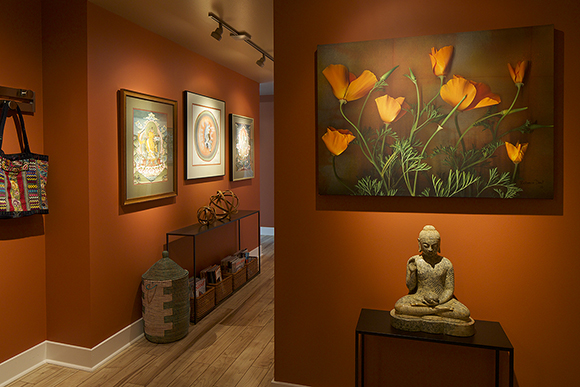
Kimball Starr Interior Design / photo by Eric Rorer
While this last photo isn’t a bedroom, it’s an entryway that leads to a bedroom. Entryways are a great way to set the mood of the home, and here we used the client’s art collected from international travels to highlight the Tibetan influence along with a few sculptural pieces. The warm orange wall color glows from lighting that highlights curated artwork. A wonderful cultural addition could be prayer flags hung along the hall ceiling, or Tibetan singing bowls on the table. This entryway makes you feel welcome, wouldn’t you agree?
Now that you have some inspiration, incorporate your own international flavor into your home to express your personality, or contact us and we’ll show you how!
Kimball Starr Interior Design is an award-winning San Francisco interior design firm providing home decorating services. Always ready for the next trip, Kimball is constantly on the lookout for travel design inspiration and new ideas around the globe!
Labels: bedroom
Jul 08, 2015 | Posted in Inspirations, Trends |



artwork courtesy Blisstree.com
Continuing our series inspired by our love of Mad Men, interior decor and summer cocktails, pairing design and drinks! Following on the heels of our last post on pairing Melon Madness with décor, this edition is a playful and colorful interior that makes entertaining fun and easy.
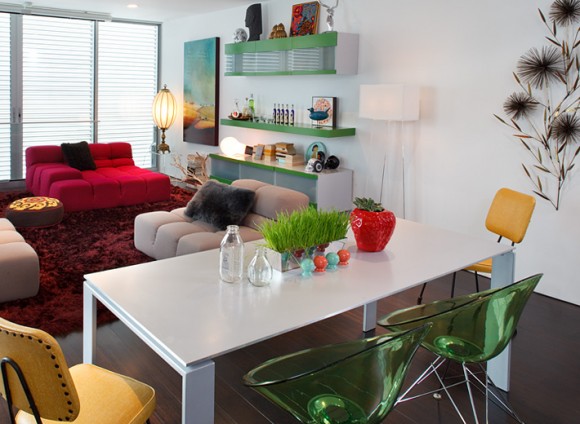
San Francisco condo living/dining area by Kimball Starr Interior Design / photo by Eric Rorer
Above in this San Francisco condo, custom chartreuse-and-silver custom cabinetry opens to reveal a cocktail bar, perfect for offering guests a drink while they enjoy a movie on the hidden projector or snack at the dining room table flanked by bright seating.

Left: Green iguana courtesy drinksmixer.com / Right: St. Patrick-tini courtesy Anders Ruff
To enjoy this bachelor pad with friends or dates, we recommend the Green Iguana!
- 1/2 part tequila
- 1 part Midori melon liqueur
- 2 parts sweet & sour mix
- ice
Mix tequila, midori melon liqueur and sweet and sour mix in a blender. Add ice. Serve in a margarita glass.
Get other pairing ideas by visiting our Pinterest Drinks & Décor Pairings! For a non-alcoholic version, we love St. Patrick-tinis! Mix green Jell-o with vanilla ice cream, and refrigerate overnight or until set and garnish with a lime twist – view the full receipe via our Pinterest.
If you need help designing a space for entertaining, we at Kimball Starr Interior Design are residential design experts! We can help you discover the possibilities of your own property!
Kimball Starr Interior Design is an award-winning San Francisco interior design firm specializing in contemporary interiors for the San Francisco, Peninsula, Marin, and San Jose area. Kimball Starr “changes lives one room at a time” by creating interiors tailored specially for you.
Labels: custom furniture, dining room, drinks & decor, living room
Jul 02, 2015 | Posted in Inspirations, Trends |



artwork courtesy Blisstree.com
Inspired by our love of Mad Men, interior decor and summer cocktails, introducing a fun series of posts pairing design and drinks! Throughout the summer months we will share with you new pairings to inspire your own entertaining and interior design style combinations.
To kick off this 4th of July holiday weekend, a kicky bungalow patio is paired with melon-infused goodness to celebrate summer breezes and fresh fruit season.
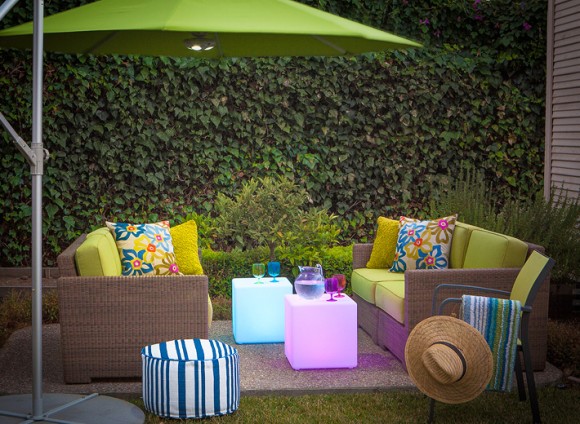
Kimball Starr Interior Design / Photo by Marija Vidal
Above in the Palo Alto backyard, Kimball Starr designed the patio with outdoor furniture made of a contemporary resin material with the look of wicker but much more durable. The patio’s outdoor umbrella has a built-in light, so you can read the paper well after sunset. You’ll never have trouble finding your cocktail with these playful illuminating cube tables that double as additional seating. And the outdoor fabric on these loveseats is designed to last through years of rain, wind and sunlight without fading or becoming frayed – it dries quickly and covers a comfortable marine-grade cushion.
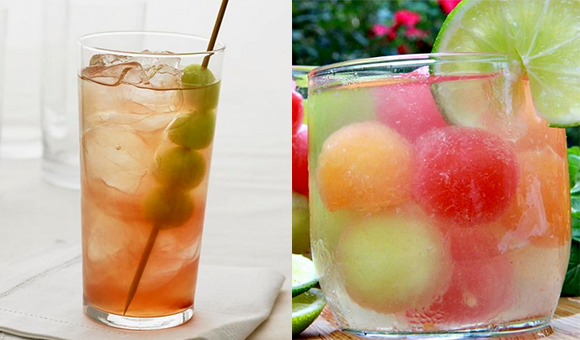
Left: Honey Deuce Cocktail courtesy Grey Goose / Right: Melon Ball Punch courtesy iFood.tv
To enjoy this outdoor space on a warm summer night, we recommend the Honey Deuce, a lovely light cocktail created by Nick Mautone, Master Mixologist for Grey Goose, for the US Open Tennis Championship in 2009. It includes vodka, raspberry liqueur, lemonade and honeydew melon balls for a taste that beats the heat.
- 1 1/4 parts Grey Goose Vodka
- Fresh-squeezed lemonade
- 1/2 part Chambord or premium raspberry liqueur
- Crushed ice
- Honeydew melon balls for garnish
Get other pairing ideas by visiting our Pinterest Drinks & Décor Pairings! For a non-alcoholic version, we love Melon Ball Punch! Mix watermelon, cantaloupe, honeydew, and limes with lemon-lime soda, lemonade and another secret ingredient you can find by visiting our Pinterest.
If you need help designing an indoor-outdoor space for entertaining, or you just want to live outdoors, we at Kimball Starr Interior Design are outdoor living design experts! Have us help you discover the possibilities of your own backyard!
Kimball Starr Interior Design is an award-winning San Francisco interior design firm specializing in contemporary interiors and outdoor living for the San Francisco, Peninsula, Marin, and San Jose area. Kimball Starr “changes lives one room at a time” by creating interiors tailored specially for you.
Labels: cocktails, contemporary, drinks & decor, outdoor, residential design
Jun 30, 2015 | Posted in Before & After |


Our first post on redesigning bay windows was a breath of fresh air, so we decided to share more “before & after” ideas from Kimball Starr Interior Design’s portfolio, and how bay windows can be beautiful spaces for relaxing with a little help from your neighborhood designer!
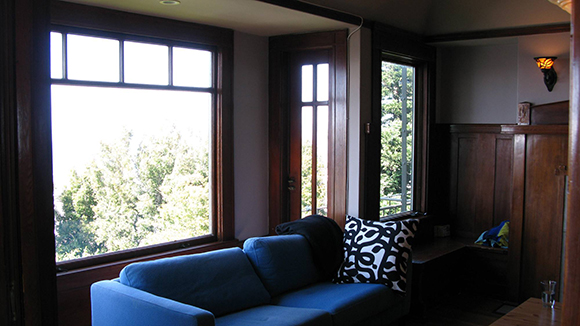
BEFORE: Russian Hill bay window
In San Francisco’s Russian Hill district, this bay window has a fantastic view that feels ignored with the sofa facing away from the window, and the darker sofa combined with the wood paneling makes the sunlit window area feel heavy.
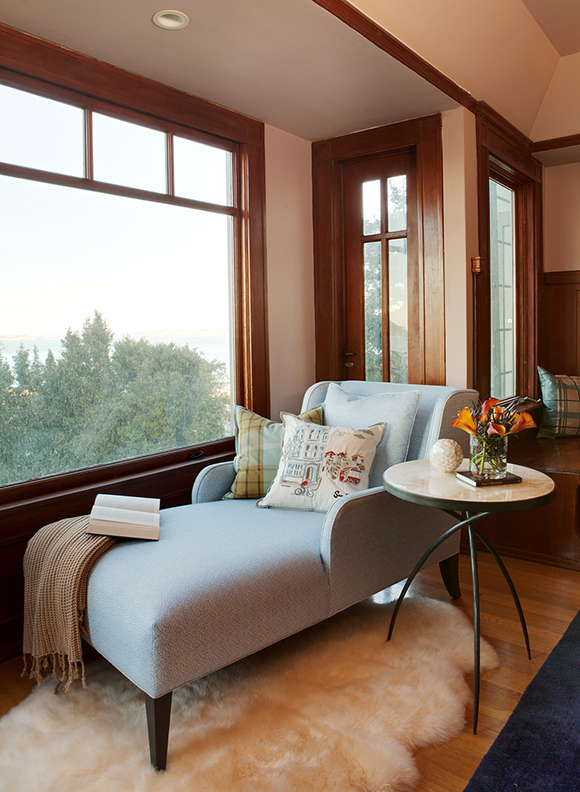
AFTER: Russian Hill Bay Window seating by Kimball Starr Interior Design / photo by Marija Vidal
Kimball Starr’s expert design makeover utilizes this space by replacing the sofa with a custom-designed chaise upholstered in a pale watery-blue. Now the chaise faces the view, and a side table is added for your book and a soft white area rug to bury your feet in.
With a lighter color palette to balance the wood paneling, and a reorientation of the furniture, you’re now encouraged to enjoy the bay window and admire the iconic view of Alcatraz and the Golden Gate bridge.
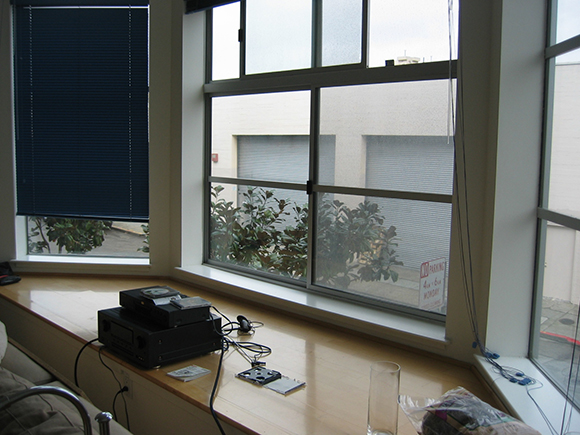
BEFORE: A wide view of the San Francisco loft bay window
A contemporary San Francisco loft located in SOMA has clean lines and modern style but the bay window space was underutilized and not inviting to use.
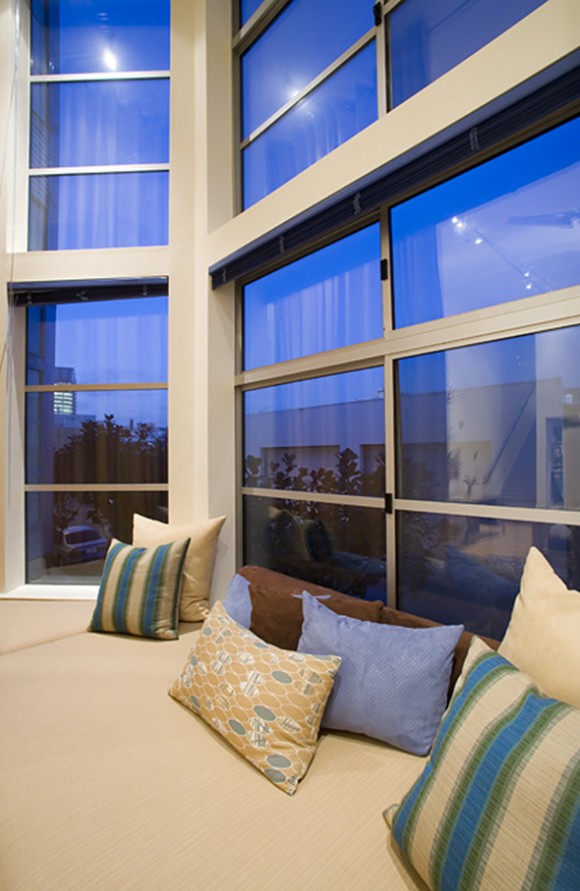
AFTER: Zen loft bay window as comfortable seating by Kimball Starr Interior Design / photo by Eric Rorer
Expert decorator Kimball Starr knew precisely how to address the dark and empty bay window space! Soften the hard surface with a custom-built window seat in cream upholstery and add colorful throw pillows. Now you can curl up in the window for a midday nap and enjoy the sunshine. And the fabrics are outdoor rated, so they won’t fade from the sun!
Do you have windows that you’re embarrassed to show? Kimball Starr can design a space you’ll love! Contact the award-winning design firm today to transform your home!
Kimball Starr Interior Design is an award-winning San Francisco interior design firm providing home design throughout the SF Bay Area.
Labels: window treatments
Jun 22, 2015 | Posted in Before & After |


Bay windows are a popular feature of many San Francisco homes – and with good reason. They allow in more natural light, provide a bit of extra space, and give an appealing view. But what if your bay windows are an eyesore? Kimball Starr Interior Design to the rescue!
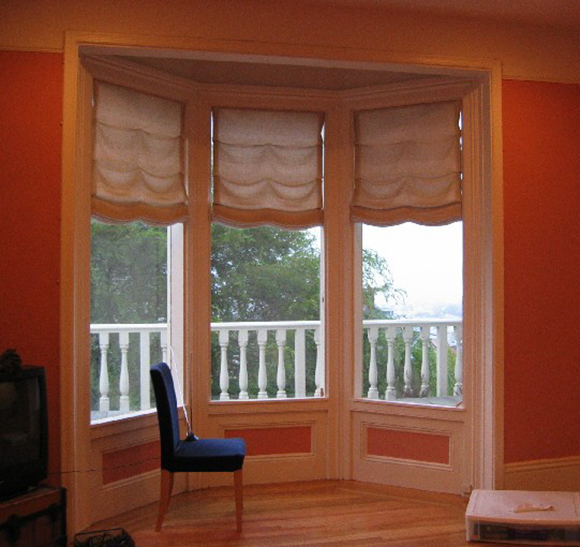
BEFORE: Pacific Heights Bay Window
Above is a Pacific Heights home with a bay window that has tired and dated window treatments. The wall color wasn’t doing it any favors either. It feels a bit dark and old-fashioned, doesn’t it?
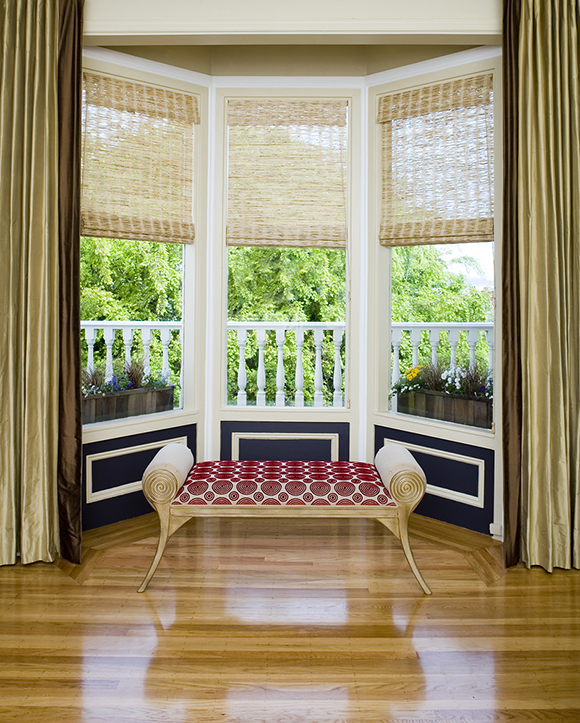
AFTER: Kimball Starr Interior Design / Photo by Eric Rorer
Solution! Replace the old window treatments with silk draperies, change out the rotting linens for natural grass woven shades, and paint the architectural wood paneling so it’s highlighted, a real feature of this home. Add some planters outside the windows, freshen up the white railings and you now have a gorgeous frame for an attractive view!
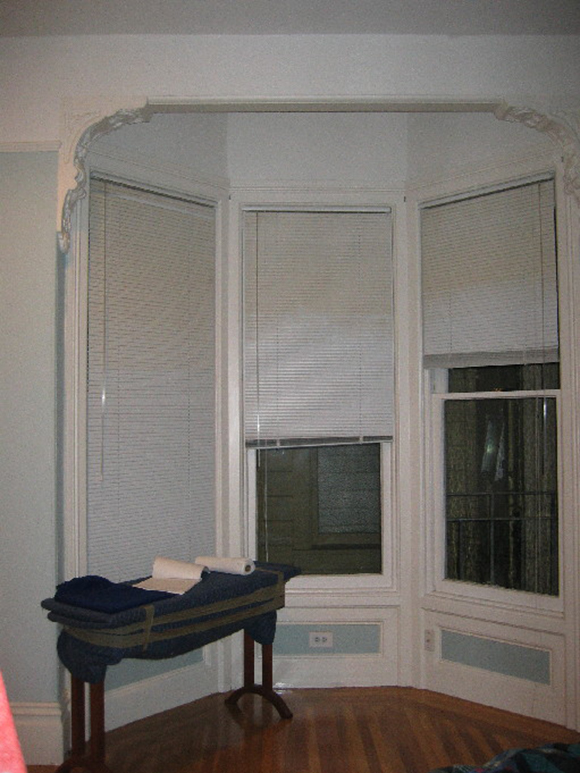
BEFORE: Bedroom Bay Window
In this same home, a matching bay window in the bedroom also needed a lift. Baby blue with white made the window space feel dull and lifeless, and the window shades were outdated.
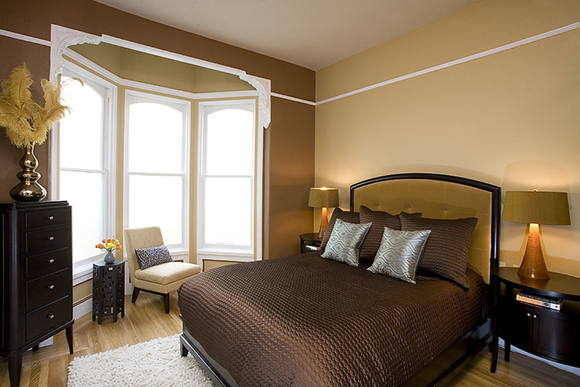
AFTER Bedroom and Window: Kimball Starr Interior Design / Photo by Eric Rorer
We selected colors of chocolate and caramel to evoke a sensual nature and richness in color for the bedroom. Outdated window shades were removed and the windows were frosted for privacy but still allow in light. The picture rail in contrasting white brought the ceiling down visually and adding a comfortable chair for reading completed the makeover of this beautiful bay window.
Do you have windows that you’d rather keep covered? Kimball Starr Interior Design can help you show them off to their best advantage! Contact this SF designer today to transform your home interior!
Kimball Starr Interior Design is an award-winning San Francisco interior design firm providing home design throughout the SF Bay Area.
Labels: bay windows
May 26, 2015 | Posted in How To & Decorating Tips |


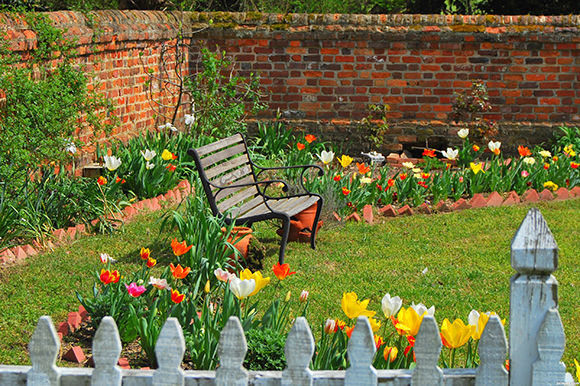
Spring Garden photo courtesy Pxleyes.com
Spring has sprung! You can smell it in the air, so fresh and exciting, when the plants starts to grow and bloom, birds and butterflies are busy and the spring rain is just around the corner (we hope!) The change of season always brings with it an intention to do – what else? – Spring Cleaning! Here are 3 simple tips to make yours swiftly effective and fun.
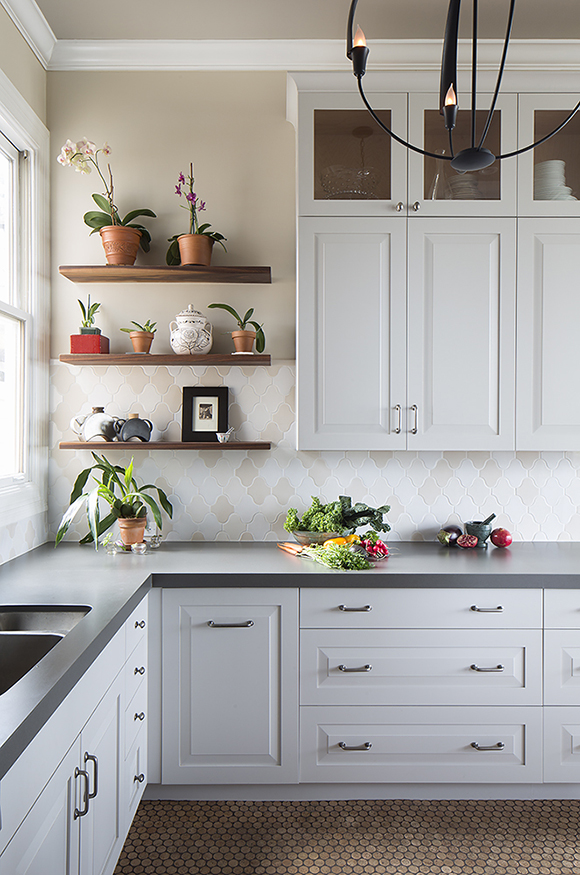
Uncluttered kitchen design by Kimball Starr / photo by Eric Rorer
1) Clean from the top down
Don’t fight gravity! Start by dusting ceiling fans, shaking out curtains, wiping blinds, and definitely do the tops of your cabinets and fridge before you get to the countertops and later the floors.
Use a microfiber cleaning tool to grab dust instead of pushing it around – Rubbermaid, Lowe’s and Walgreens all have low-cost, flexible tools. Choose something washable instead of disposable.
Freshen fabrics – launder sofa and pillow covers. Wash matching items at the same time so they always have the same wear and color. Wash your mattress pad and flip your mattress while hanging your sheets outside for that extra-fresh smell.
Sanitize high-traffic surfaces – doorknobs, drawer handles and light switches deserve extra attention. But skip the antibacterial products – plain dish soap and water or citrus-based products are the best natural antibacterial and don’t contribute to our environmental chemical load. Use bleach sparingly.
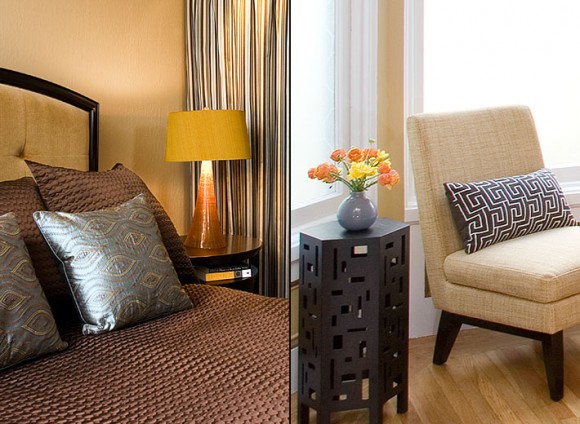
Wash and refresh fabrics when spring cleaning. Pacific Heights apartment by Kimball Starr Interior Design / photos by Eric Rorer
2) Clear the clutter
Visual clutter is disruptive to an effective work life and home life. Banish belongings to hidden storage or eliminate them altogether with these quick steps.
Remove anything that hasn’t been used within the last 7 days – either put it back into its storage location, donate it to a friend or charity, or recycle it. Landfill is the least desirable option so try to find a new home for it first.
Develop and regularly use a storage system – whether that is cardboard boxes labeled with sharpie pen, or clear plastic bins with label maker stickers, or glass jars with canning labels, keeping items separated and clearly labeled makes it easier to find and maintain them over the entire year without a huge investment in time. If it can be done in 2 minutes or less, you’re more likely to keep it up.
Group related objects together in storage – hats, gloves & scarves can go in the hall closet or up in the attic until next winter. Rotating your items seasonally means you have less to wade through in your most-used areas.
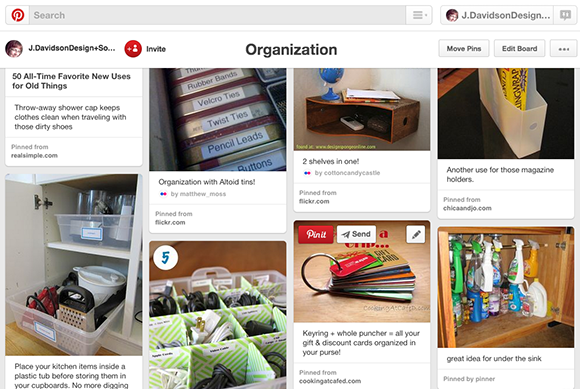
Pinterest Organization Board via J. Davidson Design + Social Media
3) Clip ideas from social media
Don’t be afraid to go someplace unexpected for cleaning advice and inspiration. Social media is full of people thinking about and doing spring cleaning at this time of year, just like you!
Create a scrapbook of ideas – you’ll need a new Pinterest spring cleaning board or a Houzz spring cleaning ideabook for all the great ideas you’ll come across.
Find inspiration – Follow a friend whose organizational smarts you admire. Look up a celebrity. Or go with a brand you trust that is natural and organic.
Celebrate your accomplishments – After you’ve sweated, take some photos to show off your sparkly-clean results! Post them to your social media of choice with a relevant hash tag such as #springcleaning, relax with a glass of wine and wait for the kudos to roll in!
Kimball Starr Interior Design is an award-winning San Francisco interior design firm providing clutter-free interior design for both residential and commercial spaces.
Labels: cleaning, storage, tips



































